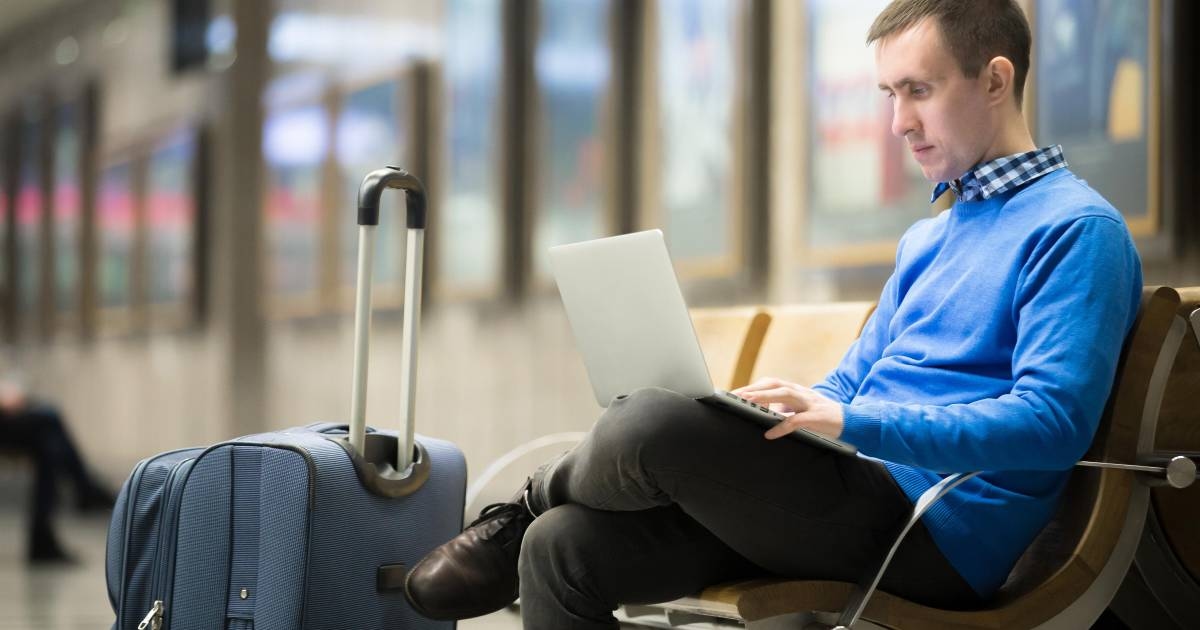How can I work remotely with public Wi-Fi in 'safe mode'?

The continued rise of remote and nomadic work exposes businesses, organizations, and professionals to a greater risk of cyberattacks, which is why it is essential that the equipment used for teleworking be properly protected so that users can use it safely when connected to a public Wi-Fi network, warns cybersecurity firm Indusface.
“Public Wi-Fi networks are more vulnerable to attacks from cybercriminals, and those who use them are more at risk of having their computers and devices infected by malware,” explains Venky Sundar, president of Indusface .
YOU MAY BE INTERESTED IN : 'Workcation,' a growing trend in the world's best cities
Sundar believes that “the best protection would be to not use these Wi-Fi networks at all, and for companies to establish guidelines in this regard, but he admits that you can never be sure that employees working remotely will strictly adhere to them.”
The need to resolve an urgent issue or address an ongoing matter; the opportunity to make productive use of "downtime" (waiting or traveling on trains or buses); and the comfort of a quiet, pleasant bar with a good atmosphere and views make it very difficult to resist the temptation to telework from locations that may not be the safest, other experts add.
Sundar explains the worst places to connect to public Wi-Fi; describes the cybersecurity risks faced by those working remotely in these locations; and offers some tips for staying safe from cyberattacks when using public Wi-Fi networks outside of your workplace.
RESTAURANTS AND CAFETERIAS
Open access in these establishments, which receive numerous customers daily, can leave users vulnerable to hackers, who can exploit the lack of security in the Wi-Fi network and use it to access personal data, in what is known as a MITM (Man in the Middle) attack, according to Sundar.
Through a MITM attack, cybercriminals can access information about the websites users visit, their browsing activity, as well as passwords and financial transactions, leaving customer and employee logins and other private data vulnerable to theft, he warns.
HOTELS
These wireless networks can be useful on a business trip or for catching up on work, but their completely open and public access means anyone can log into and control the system, according to Sundar.
Hackers or cybercriminals can gain control of a network router and exploit its weaknesses to access personal and confidential information about guests, employees, or visitors, he warns.
YOU MAY BE INTERESTED IN : 6G Sensing, mobile networks with a 'sixth sense'
PUBLIC TRANSPORT
Wi-Fi on public transportation, such as trains, can be useful for completing work en route before reaching your destination, but its vulnerability to attacks makes it a frequent target for hackers, who can then access business and financial data, as well as private information such as user login details, according to Sundar.
Hackers can obtain information by interfering with a device through malware attacks on the same Wi-Fi network to which users are connected, which is often insecure, he points out.
AIRPORTS
Airports, frequented by thousands of people using digital connections, are a key attack site for cybercriminals seeking to access personal information, such as passwords, or financial data, such as credit or debit card details, according to Sundar.
YOU MAY BE INTERESTED IN : The black market for digital crime
Business travelers should be wary of "business email compromise" (BEC), a phishing scam that attempts to access email accounts to commit fraud, such as fund transfers, he adds.
Hackers can also intercept data sent over an unsecured network and access any information entered by the user, such as passwords or passport details, which can be used to impersonate them or for other fraudulent purposes, he notes.
PROTECTION BARRIERS
To reduce risk and minimize damage, Sundar recommends that companies strengthen the security of their system access points by using good antivirus software and keeping it updated automatically, and by protecting the applications used by their employees with a WAAP barrier, a technology that protects computer systems from the most sophisticated cyberattacks.
ADDITIONAL MEASURES
To keep information properly protected when using a public Wi-Fi network, the president of Indusface also advises "disabling automatic Wi-Fi connection settings" to avoid inadvertent connections to an open access network; and "using a VPN (Virtual Private Network)" to help keep user data hidden.
Sundar also recommends that companies perform so-called gray-box DAST scans on all web and mobile applications used in their systems. These are advanced tests that look for vulnerabilities by simulating external attacks on an application while it's running, allowing them to identify and mitigate security risks.
HIGHLIGHTS :
- Digital nomadism, or the regular use of the internet and new technologies to work remotely instead of from a fixed workplace, is a growing trend, according to experts.
- "Public Wi-Fi networks are more vulnerable to attacks, and their use increases the chances of a computer being infected by malware," according to cybersecurity firm Indusface.
- “It’s crucial to keep equipment and devices protected when connecting in restaurants, cafes, hotels, public transportation, and airports,” warns Venky Sundar of Indusface.
By Ricardo Segura EFE-Reports.
Vanguardia





